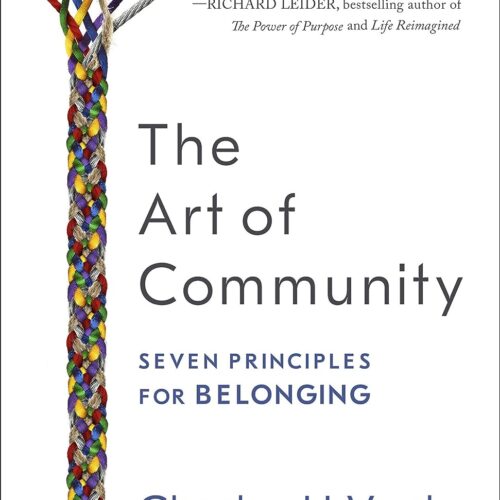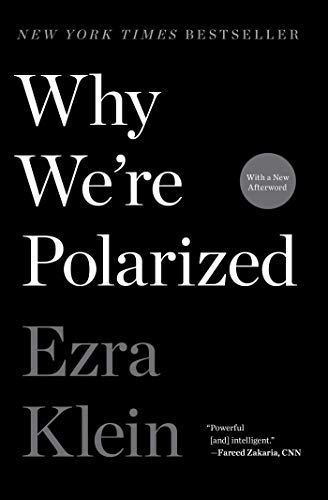Book Review-Healing Trauma: Attachment, Mind, Body and Brain

Book Review-The Art of Community: Seven Principles for Belonging
The Art of Community: Seven Principles for Belonging is more like a sketch of where to go than the kinds of GPS-enabled maps that we’re used to today, but that’s not a criticism. Community and belonging are necessarily context dependent, and as a result, there’s no one map that can lead us to the places of belonging that we long for. Robert Putnam’s work in Bowling Alone more than 20 years ago made it clear that the foundations of our social capital are eroding. He revisits these dynamics in Our Kids, explaining how we’ve become more insular in the way that we raise our kids – and less community-based.
Putnam is not alone. Sherry Turkle in Alone Together shares her perspectives on how technology is exaggerating the problem. The Great Evangelical Recession explains the loss of connection from a church perspective. In short, the problem is everywhere. The Art of Community is designed to give people a map they can use to navigate back to places of community even if that means having to take a greater responsibility in creating them.
Loneliness
Loneliness can be a powerful if not overwhelming experience that far too many people encounter during their lives. Persistent loneliness can have substantial negative health effects more than smoking or alcohol consumption. (See the book Loneliness for more.) The move away from relationships, social capital, and community means more loneliness and that the loneliness will last longer.
Communities and Tribes
Seth Godin’s book, Tribes, suggests that we need to find our group – and lead them. While tribes are sometimes used synonymously with communities, there’s an essential difference. In communities, members care about other members because they’re a member of the community. We’ve always had mechanisms where we cared about others and would make sacrifices for them. In The Selfish Gene, Richard Dawkins explains a kinship mechanism that makes this work, despite the fact no one is making a statistical analysis of the probability of matching genes when deciding to rush into a burning building to save a person – family or not. While many question the kinship hypothesis put forth by Dawkins, there is no question that we’ve evolved with a degree of concern and even self-sacrifice.
The primary problem with communities is the concern for those who would take advantage of the community by not doing their share. Adam Grant in Give and Take speaks of the takers who take more than they give. SuperCooperators and Does Altruism Exist? express a similar sentiment but back it up with mechanisms that keep it in balance. Collaboration and The Evolution of Cooperation call it “social loafing,” but it is the same thing. Cooperation leverages the best outcome for everyone over the best output for one person – the Nash equilibrium instead of the von Neumann-Morgenstern equilibrium. (See The Outward Mindset for more.)
We can see the influences today by playing the ultimatum game as explained in Drive. The short version is that we’ll punish another party if they’re not being fair – even if it has a cost to us.
Four Features, Three Questions, and Seven Principles
The core of the book is understanding how there are four features that you must be able to understand and articulate to drive the community. There are three questions that the community must help the members answer. And there are seven principles to creating community.
The four features are:
- Shared values
- Membership identity
- Moral proscriptions
- Insider understanding
The three questions that the community must help the members answer are:
- Who am I?
- How should I act?
- What do I believe?
Finally, the seven principles are:
- Boundary: The line between members and outsiders.
- Initiation: The activities that mark a new member.
- Rituals: The things we do that have meaning.
- Temple: A place set aside to find our community.
- Stories: What we share that allows others and ourselves to know our values.
- Symbols: The things that represent ideas that are important to us.
- Inner Rings: A path to growth as we participate.
Boundaries
Boundaries aren’t about keeping others out. They’re about creating safe spaces for the members. In The Image of the City, Kevin Lynch lays out a pattern for how to structure cities with six components: maps and signs (directions), landmarks (ever-present reference points), paths (channels of movement), edges (barriers), districts (major areas), and nodes (intersections). Boundaries align with the edges that keep people in their lanes.
In Collaborative Intelligence, Richard Hackman explains the importance of boundaries – and the ease of crossing into and out of the group. He describes over- and under-bounded groups and their problems. In the case of community, we often have gatekeepers. These people are designed to help people move into and out of the group. Gatekeepers are those who welcome people in – and sometimes move people outside the group.
Initiation
An aspect from Influence that didn’t make my review is that the more we put into becoming a part of a group, the more we’ll defend that group. In the rationale of justifying our decision to subject ourselves to a difficult initiation process, we necessarily increase the value of membership. The greater the cost of the initiation that we’ve gone through, the greater the value of the group. (See The Deep Water of Affinity Groups for more about association with groups.)
The balance to be struck is to make it easy enough that people will want to become a part of the community while simultaneously making it hard enough to drive further commitment to the group.
Rituals
Rituals have been burned into our culture since the very beginning. As van Gennep notes in The Rites of Passage, rituals are an important part of signaling transitions between different phases of life and of community. Robert Lewis in Raising a Modern-Day Knight encourages parents to develop their own ritual for the transition to manhood for boys.
Rituals are particularly powerful when they involve rhythm and synchronization across the group of people. The combination of synchronicity and rhythm seem to have been a part of our evolution and hold a strong primal power over us. (See Pre-Suasion, Team Genius, and Split-Second Persuasion.)
Temple
Sometimes the place that members come together are easy. If you’re a member of any of the dozens of Disney-focused groups, there are two temples in the form of Disney Land in Anaheim, CA and Disney World in Orlando, FL. Walt Disney (and his brother Roy) made sure that the experience inside the gates was a consistent story that people could walk into and ignore the outside world. (See The Wisdom of Walt and Beyond the Wisdom of Walt.)
For most of us, the place that our community meets will be less specific. Whether it’s online or it’s a gathering at a local community space, we need to consider how we create that sense of space. (See Digital Habitats for creating online spaces.)
If you’re in physical spaces, The Art of Community suggests that special places can be created by:
- Boundary: Something indicates the space boundary.
- Invitation: People important to the ritual are specifically invited into the space.
- Clothing: Participants wear special clothes to the space when it’s sacred.
- Lighting: The lighting is shaped for the ritual.
- Sound: The sound is different when the space is sacred.
- Height: Objects important for the ceremony are raised up, including people.
Stories
Since the time before written language, we’ve been telling stories. Cave paintings and oral tradition predate our writing of stories. These stories truly define us. The stories that we share and the stories that we believe bind us together and define our values. (See The Power of Myth, Story Genius, and Wired for Story for more.) The question for every community is what are the stories that every member should know? What stories should we tell to new members? Is the formation story necessary and relevant today? Is there a reawakening story that shares the new vision and values for the organization?
Symbols
There’s a tradition in the military of challenge coins. These coins are given to signify that you were a part of something – or that you were respected by someone of rank. The original story goes that if you were in a bar and said you were a part of something, someone could challenge you. If you couldn’t produce the coin as proof, you’d buy them a drink. If you did produce the coin, they’d buy you one. Since those beginnings, they’ve become a thing of pride for many military members and other groups.
Many communities have symbols. Some, like Alcoholics Anonymous, use coins as well, but your symbol can be anything that the members find value in. In Green Bay, WI, it might even be a foam, cheese-shaped wedge to wear on your head.
Inner Rings
Once a group grows to a larger size, there must be a division that separates the “inner rings” from the outer rings. That is, those who are the most committed to the community and those who are less committed. It can be an official designation. It can be an invitation to participate in a group that is helping to shape or design some aspects of the community. It’s an invitation to participate more deeply that signifies that people have made it.
Convening
Throughout my reading of The Art of Community, I was struck about how this was the temporal and relational extension of the work in The Art of Gathering. Beyond simply the similarity in names, the art of gathering – or convening – precedes the creation of community. We bring people together to allow them to form relationships and then to develop concern for one another. If you’re building community, the art of bringing people together is a prerequisite.
Binding the Group Together
Binding people together can have negative connotations. The idea that people would be prevented from leaving is quite obviously not appropriate. As we move to more restrictive forms of binding to the group, we move closer and closer to being a cult. (See Terror, Love, and Brainwashing.) However, we also need to create a sense of belonging, togetherness, and concern that binds folks so that they’ll be committed to one another to work through tough problems.
Disagreements occur in every community. Building the commitment to one another to work through hard problems and disagreements is a important part of building The Art of Community.









